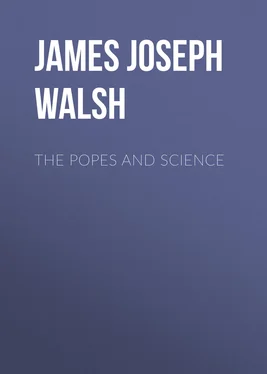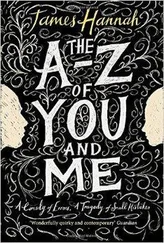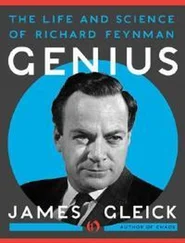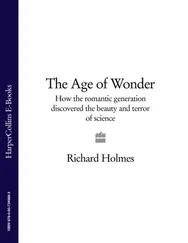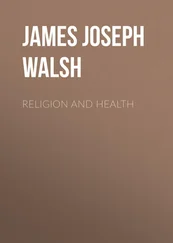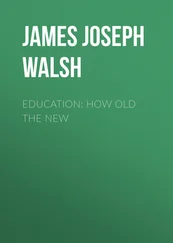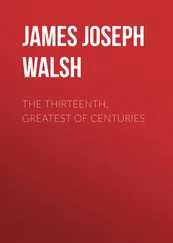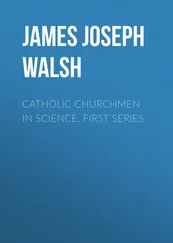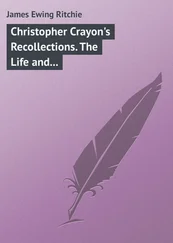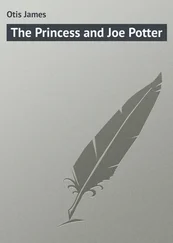James Walsh - The Popes and Science
Здесь есть возможность читать онлайн «James Walsh - The Popes and Science» — ознакомительный отрывок электронной книги совершенно бесплатно, а после прочтения отрывка купить полную версию. В некоторых случаях можно слушать аудио, скачать через торрент в формате fb2 и присутствует краткое содержание. Жанр: foreign_prose, foreign_religion, foreign_antique, на английском языке. Описание произведения, (предисловие) а так же отзывы посетителей доступны на портале библиотеки ЛибКат.
- Название:The Popes and Science
- Автор:
- Жанр:
- Год:неизвестен
- ISBN:нет данных
- Рейтинг книги:4 / 5. Голосов: 1
-
Избранное:Добавить в избранное
- Отзывы:
-
Ваша оценка:
- 80
- 1
- 2
- 3
- 4
- 5
The Popes and Science: краткое содержание, описание и аннотация
Предлагаем к чтению аннотацию, описание, краткое содержание или предисловие (зависит от того, что написал сам автор книги «The Popes and Science»). Если вы не нашли необходимую информацию о книге — напишите в комментариях, мы постараемся отыскать её.
The Popes and Science — читать онлайн ознакомительный отрывок
Ниже представлен текст книги, разбитый по страницам. Система сохранения места последней прочитанной страницы, позволяет с удобством читать онлайн бесплатно книгу «The Popes and Science», без необходимости каждый раз заново искать на чём Вы остановились. Поставьте закладку, и сможете в любой момент перейти на страницу, на которой закончили чтение.
Интервал:
Закладка:
Of course, the appeal to Venetian opposition to the Papacy as an explanation for dissection being carried on in Italy in spite of ecclesiastical regulations to the contrary is only a subterfuge. It can only be found in histories written by those who refuse to see facts as they were, because those facts do not accord with pet theories as to Papal Opposition to Science, and the Warfare Between Theology and Science, which must be maintained at all costs, though with an air of apology always for having to tell such unpleasant truths of these old-time religious authorities.
THE GOLDEN AGE OF ANATOMY
VESALIUS
The Golden Age of discovery in anatomy culminated during the first half of the sixteenth century. This will not be surprising if it is but recalled that this period represents the culmination also of that larger golden age of achievement in art and letters, which has been called the Renaissance. Columbus and Copernicus were giving men a new world and a new universe. Raphael, Michael Angelo, Lionardo da Vinci, the Bellinis and Titian were creating a new world of art. Most of these artists were deeply interested in anatomy. Every phase of human thought was being born anew. Unfortunately, this word Renaissance has given rise to many misunderstandings. Many people have taken its significance of re-birth to mean that art and letters, and with them education and thinking, were born again into the modern world at this time with the coming in of the New Learning, just as if there had been nothing worth while talking about in these lines of human accomplishment in the preceding centuries. Taken in this sense, the word Renaissance is entirely a misnomer. Magnificent achievements in art and letters and every form of education preceded the Renaissance by at least three or four centuries. The Gothic cathedrals and the enduring artistic development that took place in their making, the magnificent organization of technical education in the training of artist artisans by the guilds of the time (we would be glad if our technical schools could accomplish anything like the same results, for evidently, though the name technical education is our invention, these medieval peoples had the reality to a high degree), and finally the universities, which have remained essentially the same down to our own day–all these serve to show how much was done for every form of education many centuries before the beginning of the Renaissance so-called.
It is not surprising that with this much of education abroad in the land men succeeded in making enduring literature in every form and in every country in Europe, and in setting examples of style in prose and verse that succeeding generations have nearly always gone back to admire lovingly. Such an amount of education and development of thinking could not have come without profound attention to science, and, as a matter of fact, there was much more anticipation of even what is most modern in our scientific thinking than most scholars seem to have any idea of. Personally, I have found, in writing the history of The Thirteenth the Greatest of Centuries, more that interested me in the science of this century than in almost any other department of its wonderful educational development.
We have already seen that while anatomy had during preceding centuries only the beginning of the development that it was destined to reach during the sixteenth century, it would be a serious mistake to think that the study of anatomy, having died in the old classical days, was not re-born until the sixteenth century. This would be to commit the error that many ardent devotees of the Renaissance make with regard to all the accomplishments of this period. In spite of the contrary almost universal impression, the Renaissance was not original to any marked degree. With the touch of the Greek spirit that had come again into the world, it only carried the preceding work of great original thinkers to a high order of perfection. This happened as well in anatomy as in art and architecture and literature. Anatomical science was a lusty infant of great promise when Vesalius, the Father of Anatomy, came on the scene. The great painters, Raphael and Lionardo and Michael Angelo, owed much to Giotto and Fra Angelico, who had preceded them, but not more than Vesalius and his contemporaries, who did such magnificent work in original anatomical investigation, owed to Mondino, Bertrucci, Zerbi, Achillini, and above all to Berengar of Carpi and Benivieni, who did their work before and just after the sixteenth century opened. There is never a sudden development in the history of any department of man's knowledge or achievement, as there is nothing absolutely new under the sun, though it is still the custom of the young man in his graduation essay to talk of such things, and older men sometimes fail to realize the truth that in history as in biology, life always comes from preceding life– omne vivum ex vivo --and there is no such thing as spontaneous generation.
If the achievements of this earlier period of scientific work, which affected anatomy even more than any of the other sciences, be kept in mind, the discussion of the Golden Age of Anatomy will find its proper place in the history of the relation of the Popes to science. Though the date of the Golden Age in Anatomy follows that of the so-called reformation, there is absolutely no connection between the two series of events, for the one took place in Germany and the other in Italy. The Golden Age of Anatomy was indeed a perfectly legitimate and quite to be expected culmination of the anatomical interest which had been gradually rising to a climax in the Italian universities during the preceding century. It has a definite place in the evolution of science, and is not a sudden or unlooked for phenomenon.
If there was any place in the world at the beginning of the sixteenth century in which the ecclesiastical authorities had much to say with regard to what should not be taught and what should not be studied in the universities, it was Italy. In spite of this fact, all medical men who wanted to do post-graduate work in medicine went down into Italy. This was especially true for those who desired to obtain ampler opportunities for anatomical study than were afforded by the rest of Europe. In his maturer years as a student of medicine, Vesalius went down to Italy in order to avail himself of the magnificent field for investigation that was provided there. This favorable state of affairs as regards research in anatomy had existed for more than a century before his time. It continued to be true for at least two centuries after his time. As a matter of fact, Italy was to the rest of the world of the fifteenth and sixteenth and seventeenth centuries the home of post-graduate opportunities in all sciences as well as in medicine.
These are not idle words, but are fully substantiated by the lives of the men who stand at the head of our modern medicine. More than a decade before Vesalius was born, Linacre, the distinguished English physician and founder of the Royal College of Physicians, went to Italy to complete his medical studies and incidentally also to round out his education in the midst of the new learning which was so thoroughly cultivated there. When Linacre was leaving Italy, with true classic spirit he set up a little altar on the top of the Alps whence he could get his last view of the Italian plains, and greeted the charming country that he was leaving so reluctantly with the beautiful name of Alma Mater Studiorum. To him, after his return to England, English-speaking medical men owe the establishment of the institution which above all others has helped to uplift the dignity of the medical profession and make the practice of the healing art something more than a mere trade–the Royal College of Physicians.
One of Vesalius's most distinguished fellow students at Padua was Dr. John Caius, who was later to become the worthy president of the Royal College of Physicians of England and the author of certain important medical works. Dr. Caius was the first to introduce the practice of public dissections into England. Caius and Vesalius were roommates, though at the time Vesalius was an instructor at the University, and the inspiration of his originality seems to have had a great effect upon young Caius. They were nearly of the same age, though Vesalius was a precocious genius, and Caius's greatness only showed itself in maturity. Caius was studying in Italy partly because the religious disturbances in England had made it uncomfortable for him to remain in his native country, for he was a firm adherent of the old Church and he hoped they would pass over, but mainly because he coveted the opportunities afforded by that country. Later in life, out of the revenues of his position as Royal Physician to Queen Mary and subsequently for some time to Queen Elizabeth, he founded the famous Caius College at Cambridge, usually called Key's College by Cantabrigians.
Читать дальшеИнтервал:
Закладка:
Похожие книги на «The Popes and Science»
Представляем Вашему вниманию похожие книги на «The Popes and Science» списком для выбора. Мы отобрали схожую по названию и смыслу литературу в надежде предоставить читателям больше вариантов отыскать новые, интересные, ещё непрочитанные произведения.
Обсуждение, отзывы о книге «The Popes and Science» и просто собственные мнения читателей. Оставьте ваши комментарии, напишите, что Вы думаете о произведении, его смысле или главных героях. Укажите что конкретно понравилось, а что нет, и почему Вы так считаете.
